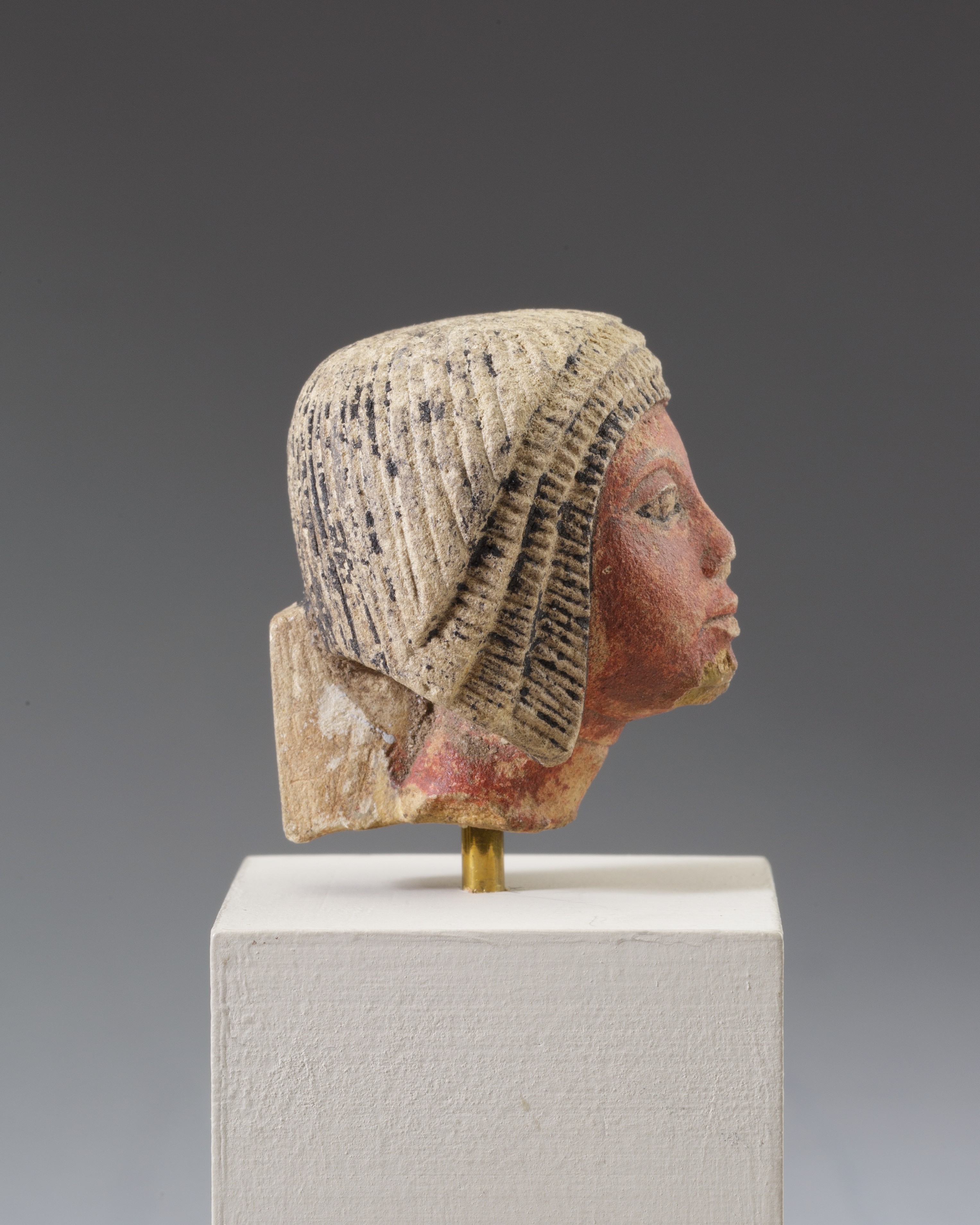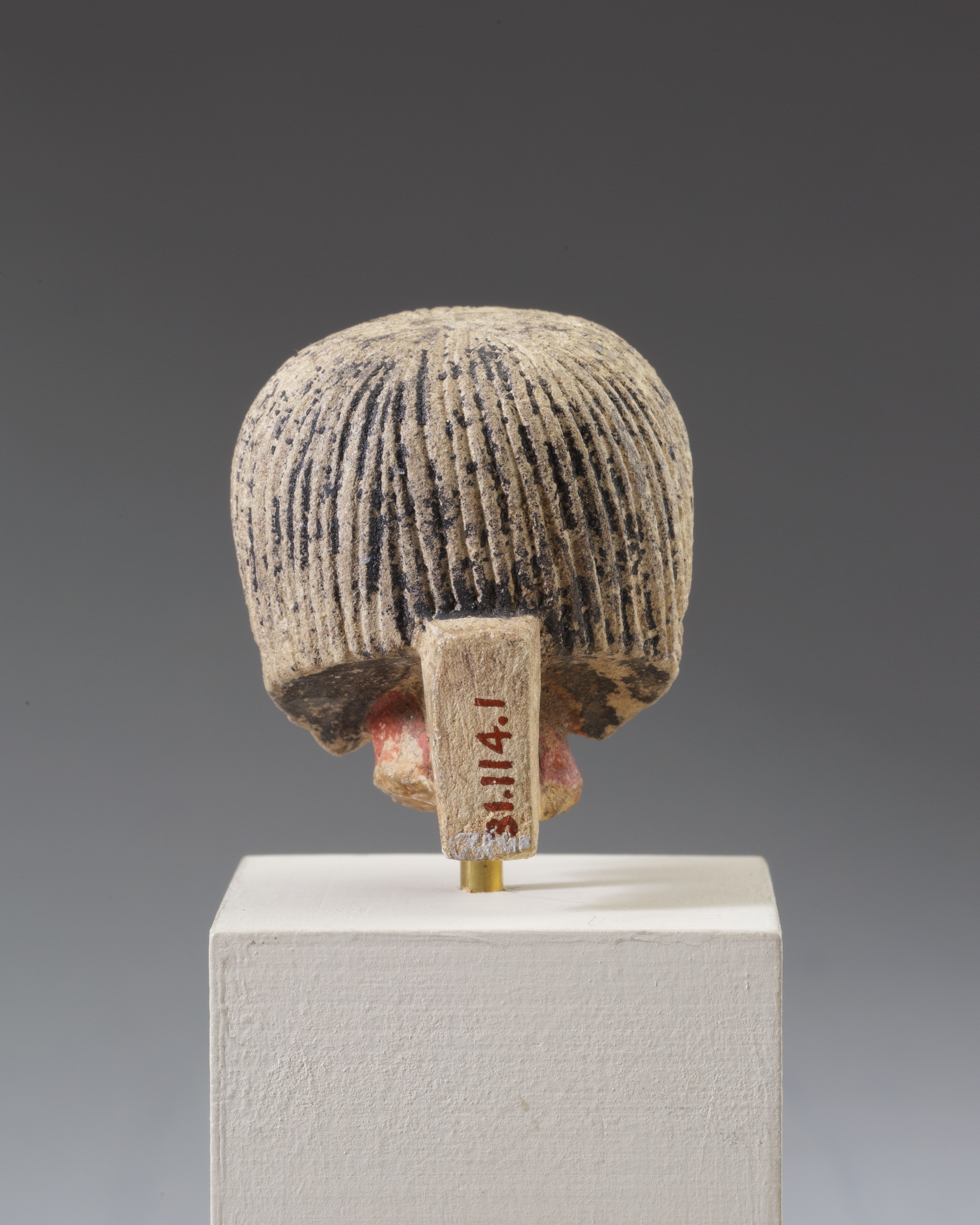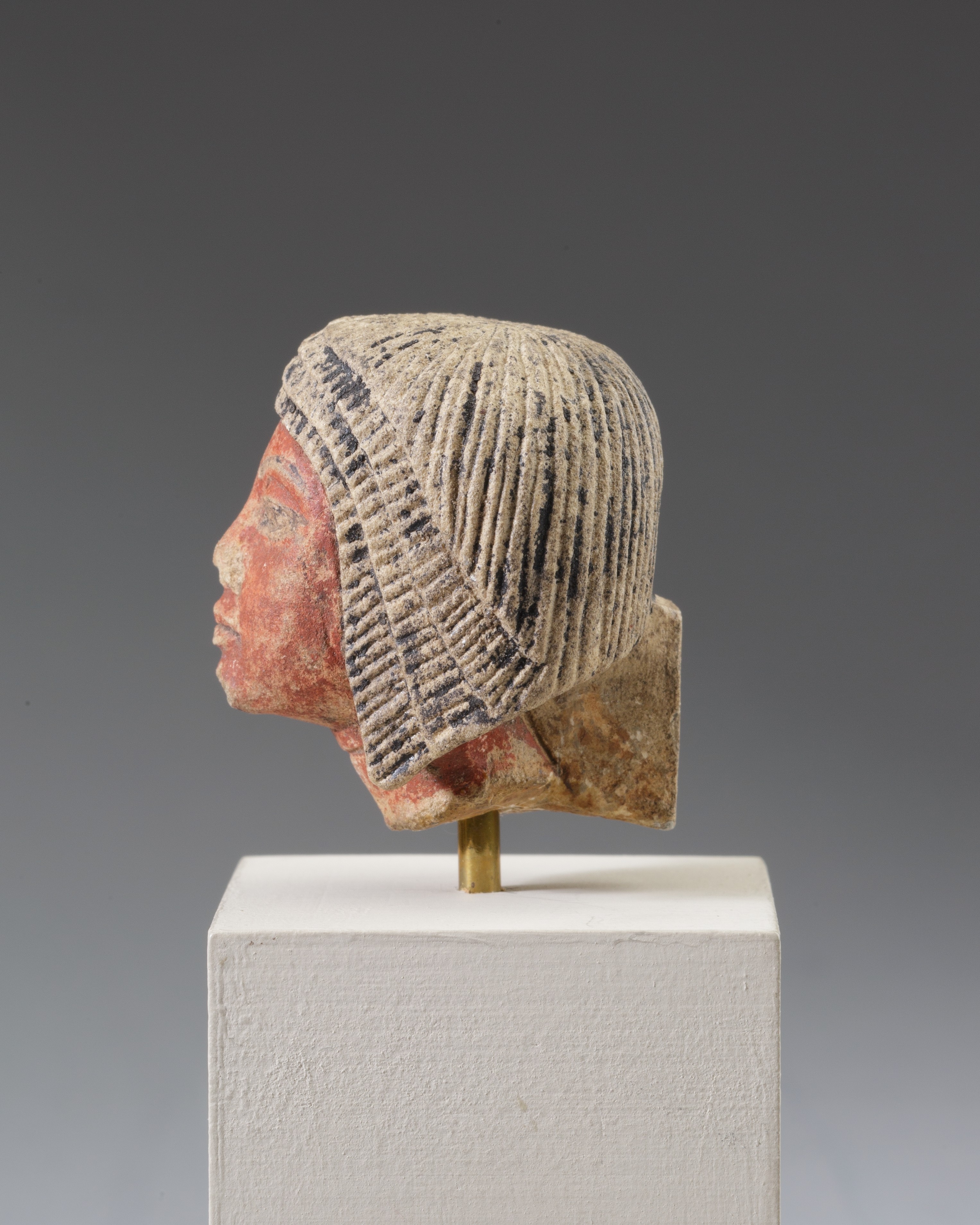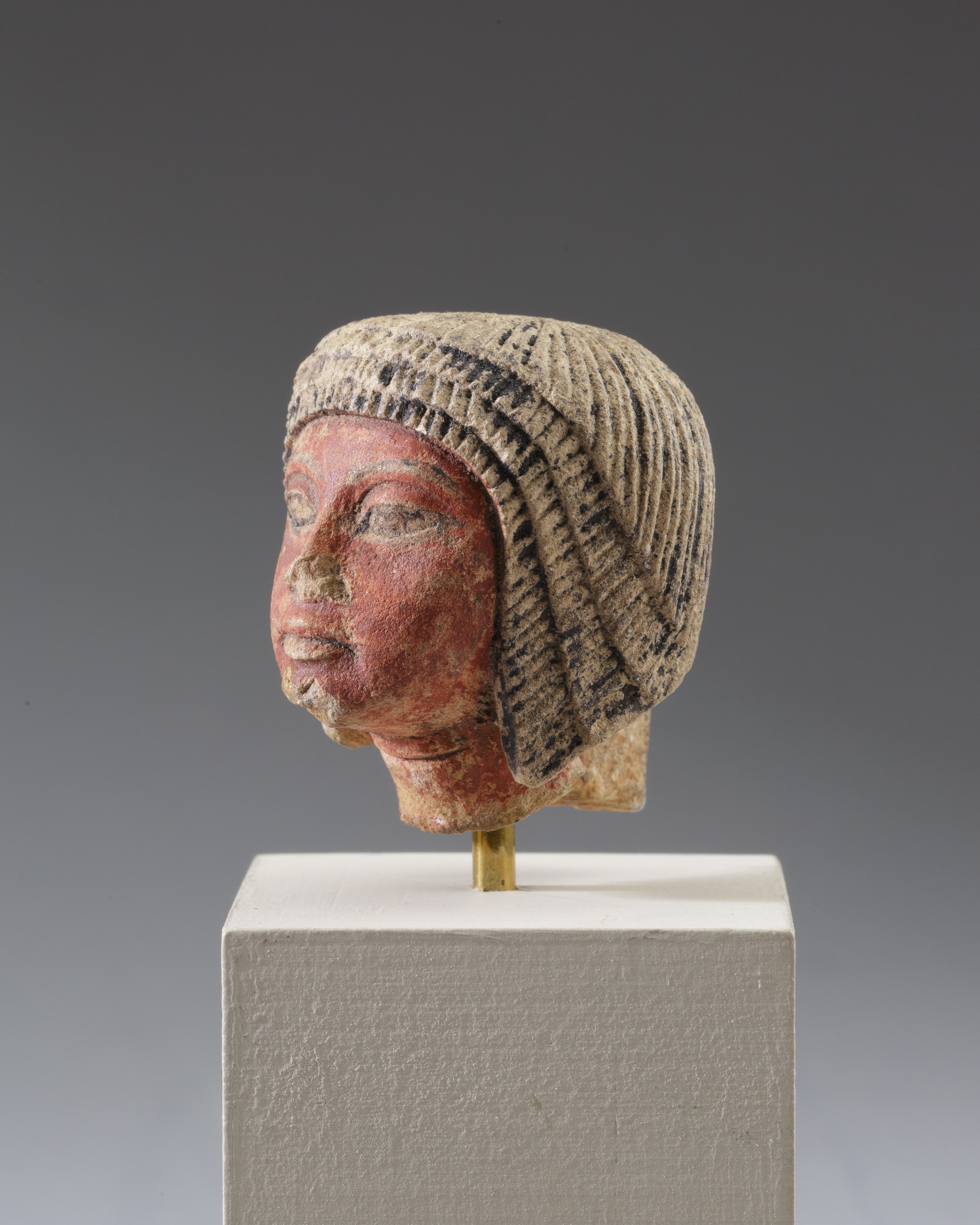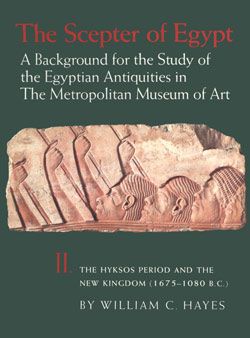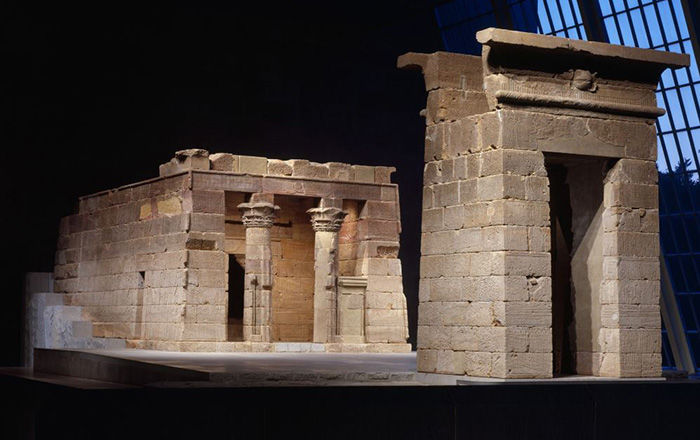Head from a statuette
New Kingdom, Amarna Period
The statue from which this small head is broken was probably a private icon. Such icons represent probably a revered, perhaps deceased, relative, overlord or other person, and were displayed in the home or other suitable places and received attentions and address from the living. This head was found in an unimpressive private house in a crowded area of the North Suburb: if it originated there, such a fine statue may have been commissioned by the person represented and given to those who were his dependents. See also 11.150.21.
In fact, it has long been discussed whether this head represents a non-royal male or a royal female. The subject wears a type of wig popular among royal women, but not exclusively so - it is also found on officials. The red skin color would point to a male, but skin color may not be a reliable indicator of sex in the Amarna Period. If a female were represented, it should be a princess forming part of a group and would be be placed in a shrine to the royal family at some home. But the preserved group statues all depict the princesses as young children - whatever their actual age. Given these considerations, it seems more likely the head is that of a male.
This image cannot be enlarged, viewed at full screen, or downloaded.
This artwork is meant to be viewed from right to left. Scroll left to view more.



